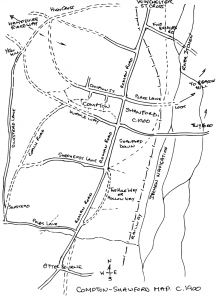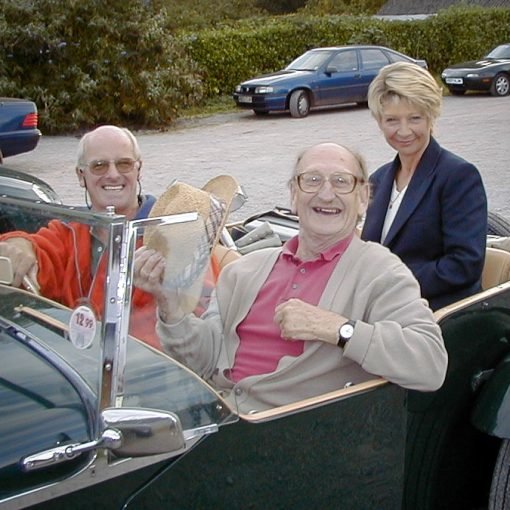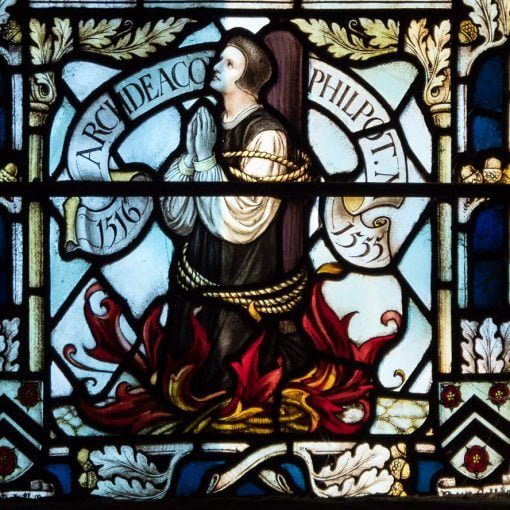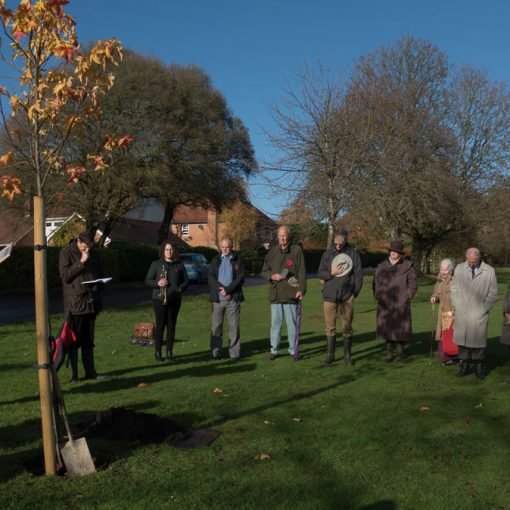Table of Contents
The Otterbourne Road
A brief history of tracks, routes and roads in Compton & Shawford:
The Otterbourne Road.
A unique feature of our village is that it has grown around routes, mainly north-south, but also west-east. These routes are longstanding and important ways. The oldest were Neolithic ways along the banks of the River Itchen. Also Celtic tracks that cut across the area from the Hampshire Ridgeway in the west to those in the east, fording the river at the Shallow Ford and what is now Compton Lock.

In Roman times, the environs of the south coast were little better than wild stretches of tangled forests and treacherous water. Undaunted, the Roman engineers (under Emperor Vespasian) built a road from Clausentum (Bitterne, Southampton) to Venta Belgarum (Winchester). As a rule, their roads were straight, and the line of this one is clear from Otterbourne Hill to Southgate Winchester.
Forest had to be cleared and the road shaped and surfaced. An excavation east of the main road at the top of Otterbourne Hill showed that it was “surfaced with Tertiary rounded pebbles.” It seems likely that the Otterbourne Road to Compton was surfaced in sarsen stones (Tertiary) and local flints. “Signs of the Roman Road were visible beneath hedges of the modern road by the houses on the slope down towards Otterbourne. The entrance gates of these homes are built on it.” (reference in JP Williams-Freeman HFCAS 1914 Vol 7 pt1).
The Romans departed in about 450 AD and it seems that this road soon fell into disrepair, perhaps through local people taking the surface stones for their own buildings. The forest would soon reclaim its land.
There were tracks through the forest and one of these became an alternative route for the “Kings Highway.” This was the “Hole Way” or “Hollow Way” which runs through the rear of the gardens on the east side of Otterbourne Road and on the west of the house gardens of Fairfield Road.
Sadly, much has been filled in, but sections remain as historical evidence. It was well used, as parts of it are approximately 10 metres deep by 10 metres wide. Traffic would have been people walking, perhaps driving their sheep or cattle, carts pulled by oxen, horses and riders and much later, coaches and horses. It probably worked as a by-pass for some 500 years! Records show that villagers were instructed on pain of heavy fines to repair the road in 1400, 1447, 1479 (when people were digging out the chalk), 1563, 1651 and until 1783. (reference JS Drew 1939 Compton nr Winchester)
An Act of Parliament in 1753 established Trustees for the Southampton Turnpike Road. After 1758, they purchased land to create a straight line from the top of Compton Hill to the watercourse on Otterbourne Street. This followed the original Roman Road. By 1783, the Hollow Way was impassable and defunct. The land was purchased by local landowners. At this time, the Navigational Canal had been built to carry goods to Winchester (1710-1869) and the Railway following the routes in parallel from 1837. The M3 motorway of 1995 completes the modern pattern of routes.
John Wilkinson
for the Compton Shawford Local History Society.
This article first appeared in the October 2019 issue of the Compton & Shawford Parish Magazine.
This version corrects a few typos and adds the references section.
References:
HFCAS: Hampshire Field Club & Archaeology Society
Dr. John Peere Williams-Freeman
Proceedings of the Hampshire Field Club & Archaeological Society, Volume 7, Part 1 1914
Williams-Freeman, J P Notes on Roman Roads in the South of Hants
In 1895 Dr. J.P. Williams-Freeman, a Weyhill country doctor trained as a military surveyor, became a member of the Hampshire Field Club; he was a fine amateur field archaeologist.
For more information about J.P.Williams-Freeman see Proceedings of the Hampshire Field Club & Archaeological Society, Volume 16, Part 1 1944 for the obituary by O.G.S.Crawford, followed by a lengthy appreciation by J.H.Gibson at http://www.hantsfieldclub.org.uk/publications/hampshirestudies/digital/1940s/vol16/Other_material_pt1.pdf
See also the Oxford Dictionary of National Biography at https://doi.org/10.1093/ref:odnb/36932 (you will need to sign in with your Hampshire Library card number to read the whole article).
J S Drew
“John Summers Drew was a gifted amateur historian who in retirement dedicated the last twenty years of his life first to the translation, study and interpretation of monastic and manorial documents of the Priory of St Swithun, Winchester.”
“John Drew is best known locally for his first published work, Compton near Winchester (published by Warren & Sons, 1939), a book now long out of print and becoming increasingly rare.”
The quotes above are from John Summers Drew (1879-1949): a Neglected Hampshire Historian by Barbara Turnbull
Proc Hampsh Field Club Archaeol Soc 48, 1992, 161-179 – reproduced on our website by permission from HFCAS.
See also The Ancient Roads of Compton by J.S.Drew, a series of five articles which appeared in the Compton & Shawford Parish Magazine in 1937/8




